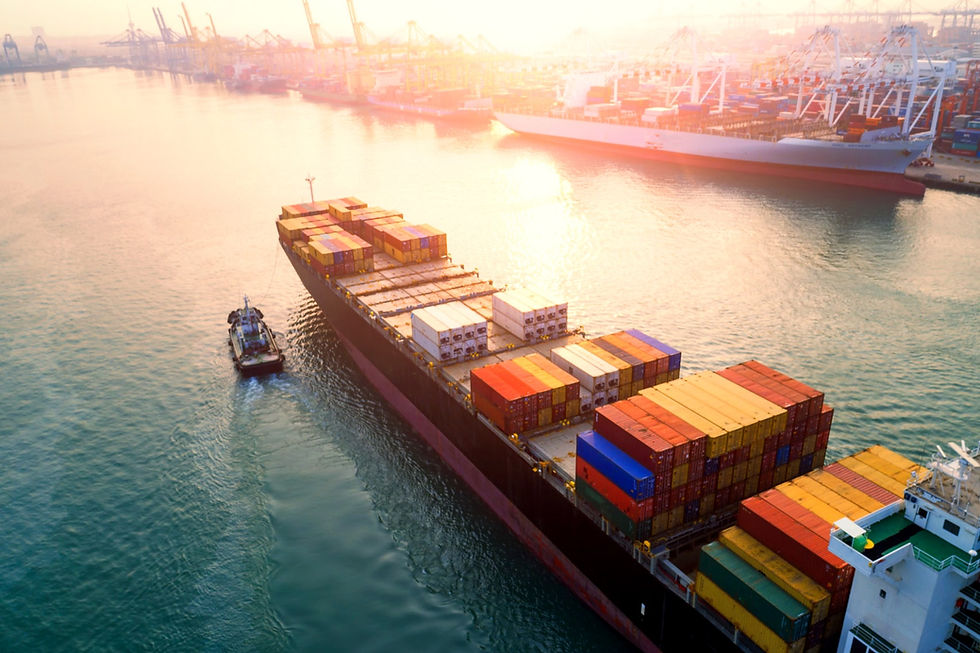Seven Ways Costly Errors Creep into Customs Docs—and One Simple Solution
- Robert Landon

- Jun 16, 2020
- 3 min read
Updated: Aug 2, 2020
Do you know that sinking feeling when you find out your cargo has been stopped for customs inspection? Demurrage and other fees start piling up, and hard-won margins evaporate before your eyes. Worse, you risk disappointing your customers—and losing their business going forward.
No broker or technology can guarantee cargo will never be inspected, but you can significantly lower the odds. For example, you can work with a C-TPAT-certified broker. In addition, you can ensure that every single customs entry document is complete, consistent and accurate. Even small discrepancies raise red flags with the U.S. Customs & Border Protection (CBP), and then, boom—your goods get diverted to inspections.

Sounds straightforward, but there’s a catch. Even when you do everything right at your end, errors can sneak in. Why? Because international shipping is one of the last bastions of disconnected legacy processes—a combination of paper documents, email, phone calls, faxes, etc. Meanwhile, the cargo and related documents must pass through multiple hands before it ever reaches you. At each handoff, there is the potential for small human errors that can lead to huge negative business impacts.
Even small, nitty-gritty errors about weight, dimensions, packaging, etc. can lead to inspections. Here are the seven key hand-offs where errors can creep in:
Between you and manufacturer/supplier—when you place your original order.
Between you and freight forwarder—when you book their service.
Between manufacturer/supplier and freight forwarder—when suppliers notify freight forwarder cargo is ready for shipment.
Between freight forwarder and their agent overseas—when your freight forwarder notifies local agent cargo is ready for shipment.
Between freight forwarder and steamship line/airline—when freight forward books passage bound for a US port.
Between freight forwarder and customs broker—when freight forward provides customs broker with a Bill of Lading or arrival information.
Between broker and CBP—when the cargo has arrived and customs broker transmits entry documents, which includes data gathered from all parties: you, manufacture/supplier, freight forwarder and you.
At each handoff, there is the potential for small human errors that can lead to huge negative business impacts. And there are lots of small details that can go awry—the exact item description and classification, its weight and dimensions, packaging details, etc. Even just a slight misspelling of your company’s name can lead to costly delays.
Considering all these handoffs, you can see how many opportunities there are for something to fall through the cracks. If just one of the parties passes information on too late, the entire chain breaks. And if information is incorrect, no one feels responsible for catching the mistake. So you end up devoting precious time having to manage all these parties.
A Simple Fix to a Complex Problem
There is actually a simple way to reduce the risk of error, and to make all parties more productive at the same time. Approximately 80 percent of all data elements used for customs entries are created by the shipper overseas. What if they could enter those into a database that could be accessed by all other parties? There would be no double entry, and no delay in passing on information.
Essentially, this requires a single, centralized set of customs entry documents, to which all parties—manufacturers/suppliers, freight forwarders, customs brokers, and importers—have role-based access. Think of it as a library of all the required customs entry information.
To work, such a solution must be intuitive, user-friendly and easy to adopt. And for that to happen, it must be engineered to connect to every disparate user and system involved, so that they all share that record seamlessly.
Zeus Logics has already tackled this challenge. Our technology helps you:
Avoid the high cost of CBP inspections
Speed customs clearance
Make your own team more productive
Better serve your customers
Lower costs
Contact us if you want to learn more.



Comments